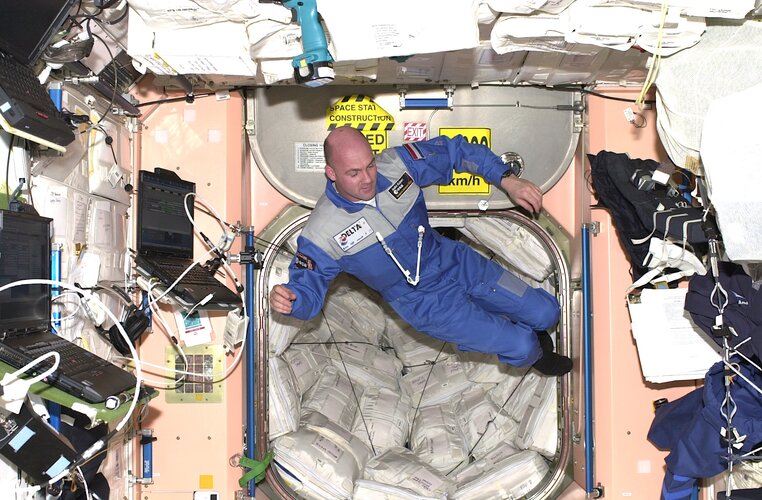A robot must obey the orders given it by human beings, according to one of the three laws of robotics imagined by science fiction writer Isaac Asimov. On board humanity’s only outpost in space, this obedience has turned into cooperation. Astronauts and robots are working together.
The latest robot to service the International Space Station is the European Robotic Arm (ERA). This android automaton is much like a human arm. It has an elbow, shoulders and even wrists, and it the first robot able to ‘walk’ around the Russian part of the Space Station.
The arm will be launched into space together with the Multipurpose Laboratory Module, called ‘Nauka’, from the Baikonur Cosmodrome, in Kazakhstan, on 15 July 2021 at 19:18 CEST.
ESA astronaut André Kuipers is seen in this picture during his first space mission in 2004, with a scale model of the European Robotic Arm. The real thing has a length of over 11 m, and has the ability to anchor itself to the Station in multiple locations, moving backwards and forwards with a large range of motion.
“I am happy to see the European Robotic Arm fly next month. It was a real pleasure to help prepare this fantastic piece of robotics for its duties on the International Space Station”, says André, who trained under water with a real-size model of the robot at Star City, in Russia, before his spaceflight.
Astronauts will find in ERA a most valuable ally – it will save them precious time to do other work in space. ERA will transfer payloads from inside to outside the International Space Station, but it will also help spacewalkers by transporting them around like a cherry-picker crane.
The crew can control ERA from both inside and outside the Space Station, a feature that no other robotic arm has offered before. The robotic arm can perform many tasks automatically, and it can be controlled in real time or preprogrammed. ERA’s first tasks in orbit are to set up the airlock and install a large radiator for ‘Nauka’.
ERA is 100% made-in-Europe. A consortium of European companies led by Airbus Defence and Space Netherlands designed and assembled it for ESA.
The story of the European Robotic Arm is one of perseverance – it has survived four changes of scenario, dealt with different space agencies and coped with budget shortfalls while keeping an international team motivated.
After two decades of technical and programmatic challenges, the long-awaited premiere of ERA in space is finally happening.



 Image:
André Kuipers with a European Robotic Arm model on the Space Station
Image:
André Kuipers with a European Robotic Arm model on the Space Station